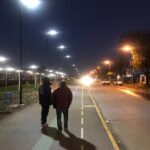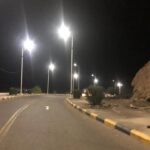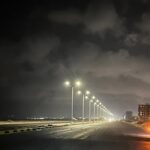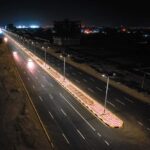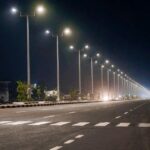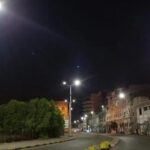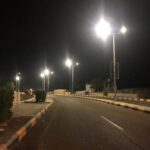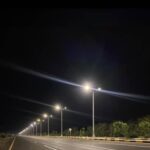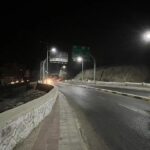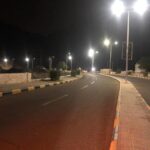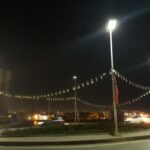Nations are grouped into two categories, developed and developing countries, based on industrialization and per capita income levels. In this article, you will learn how countries that have lower per capita income levels and less industrialized get to enjoy the advantages of solar street light.
The list of low and middle-income countries (LMICs) is quite extensive, so it would not be easy to consider each country. Here we are going to go through countries that have sizeable solar-powered street light projects.
Affordable and Clean Lighting and Energy
Going by the United Nation’s Sustainable Development Goals (SDGs), developing countries are required to provide affordable and clean energy (SDG Goal 7). Most lighting projects in LMICs are meant to be powered by solar energy.
Investing in solar street lighting not only provides security light at night, but it also offers clean and more efficient energy. The excess solar energy produced by the photovoltaic cells can be fed to a local grid to power homes in the rural areas of developing countries.
Moving away from fossil fuels and embracing solar energy is what most investors, project managers, or developing countries use to reduce their carbon footprint. Solar street light is a low-carbon development investment and can be used as a tool for climate action (SDG Goal 13).
Better Spending of Public Funds
Learning from Uganda, investing on solar-powered street lights as opposed to conventional grid-based options could reduce your installation costs by at least 25 percent. Most of the developing countries operate on minimal budgets; most local authorities lack the necessary capital to finance such investments. As a result, cheaper solutions, such as solar lighting can easily be implemented.
The upfront cost of using traditional street lighting is enormous in areas that lack electricity connection. The government must first provide grid connectivity before the street light infrastructure, hence increasing the cost of investment. Therefore, solar street lighting becomes a viable solution.
The government can redirect the saving from solar street light projects to set up more street lights or use it to provide other public services such as building more infrastructures.
Economic Benefits
Solar street light investment in Uganda has brought a more vibrant night-time economy. Using the light coming from these retrofits, informal vendors and traders can operate for longer hours at night. This has helped them cater to professionals who come home late from work, and in return, they get an income.
Extending working and trading hours beyond daylight hours creates employment which contributes positively to the economy of developing countries. Since income is one of the factors that can make a country moves up the ladder of development, then solar street lighting could change the situation.
The installation of solar-powered street lights also provides job opportunities to the local communities, especially those with a specialty in solar energy. Tender and Transportation of the infrastructure can also be viewed as a source of income to members of the country, especially if the community is primarily involved.
As crime rates reduce in the informal settlements and low-income neighborhoods, companies would be willing to invest and thus end the economic challenges caused by insufficient or insecure employment opportunities.
Coalition Between Countries
Most of the developing countries may not be in a capacity to build their own solar street light infrastructure due to technological and innovation challenges. This means LMICs get support from companies such as DEL ILLUMINATION, located in developed countries.
The partnership extends from State-company to country-country relationships. The shared technology and technical expertise could improve industrialization in developing countries hence allowing them to become established.
Solar street light Knowledge spillover and capacity building for government officials and local communities will promote social and economic development.
Road and Public Security Benefits
Taking the case of the solar-powered street light project in Uganda, it has generated better road safety and lower crime rates in the country. In terms of road safety, they have reduced accidents due to poor visibility and carjacking. It has reduced fatalities from road traffic injuries, which is a high risk for pedestrians in developing countries.
Lower crime rates in the communities are as a result of lighting up streets for better identification of robbers which prevents them from involving themselves in criminal activities. Therefore, people can now confidently walk at night along these lit up streets, which was once impossible. These streets are now safe and more secure, especially for women.
Energy Efficiency Benefits
Efficiency using solar street lights comes into the picture when you consider that less or no electricity is required from the local company grid. This means the demand for electric power in the country can easily be met when the project does not consume power from the mains.
According to experts, the adoption of solar LED street lights by developing countries can reduce electricity consumption by 40 percent.
Higher Property Value
In the modern property market, most buyers would be willing to buy a solar-powered house. The installation of solar street lights makes security easy in homes that have a big compound or buildings closer to these systems.
We all desire to live in a neighborhood that is well lit and where you can avoid being robbed at your gate, which is more rampant in most developing countries.
Sustainable Solution
If you examine the operations of solar street lights, you will find that they have almost no operating costs. The most likely cost would come from repairs and maintenance. The cost maintenance of solar-powered streetlights is 60% of what you would pay for the conventional grid type.
Solar-powered street lights are sustainable because they offer a constant supply of light even during power outages, which is a common problem in developing countries.
Advantages of Solar Street Light: Conclusion
The advantages of solar street light projects in developing countries, as you see for yourself, are many and enough to improve the levels of living in urban and rural settings. These retrofits mostly benefit the informal settlements or vulnerable population in remote areas.
As the technology supporting advantages of solar street light, there will be no reason as to why you would not want to invest in this affordable and clean lighting solution.



